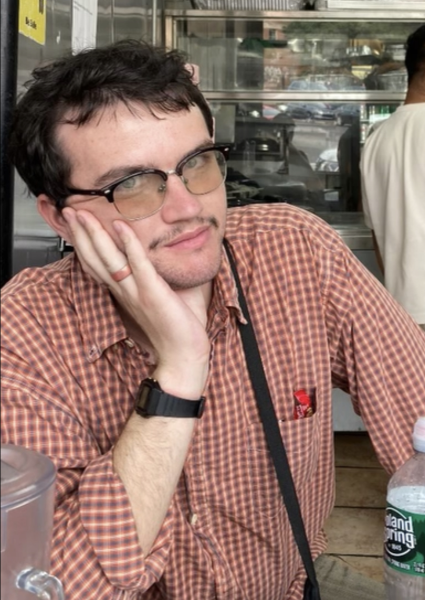Spring is a season of transitions — thawing snow gives way to blooming flowers, gray skies give way to sunshine and death is replaced by birth and the prospects of new beginnings. Consequently, it’s also a rich thematic backdrop for films that tap into this emotional backdrop, exploring change, nostalgia, youth and new beginnings. Whether you’re looking to match the season’s vibrancy or counterbalance it with introspective melancholy, this list has something for everyone.
‘Late Spring‘ (1949)
Arguably Yasujirō Ozu’s greatest masterpiece, “Late Spring” is an obvious pick for this list. Although shot mostly indoors in Ozu’s distinctive style, this film’s subject matter and themes are certainly vernal. The film focuses on the relationship between an aging widower and his adult daughter. “Late Spring” is all about transition: from old to new, from single life to marriage and yes, from spring to summer. The inclusion of several beautiful exterior shots, some of the most sublime in Ozu’s large filmography, should cement this movie’s place as a seasonal classic.
‘Hail Mary‘ (1985)
“Hail Mary” is the late French New Wave master Jean-Luc Godard’s most beautiful and most controversial work. In a modern retelling of the virginal conception and birth of Christ, we follow Marie, a young Swiss girl, who is one day informed that she will give virgin birth.
Nature plays a big role in this film. Beautiful forests and gardens dominate the opening sequence. Marie’s later communions with the Divine are represented visually by shots of flowers, grass and trees blowing in the wind. Godard and editor Anne-Marie Miéville’s loose, impressionistic editing establishes an almost transcendental feeling. Combined with all the natural beauty, this film is a perfect springtime pick. While certain officials in the Catholic Church condemned “Hail Mary” as blasphemous, the picture’s handling of the central Marian conceit is actually quite sensitive and respectful; open-minded audiences of any faith with a taste for the avant-garde will find much to appreciate.
‘Spring Breakers‘ (2012)
Another movie with the word “spring” in the title, this one feels obligatory. This gaudy masterpiece from director Harmony Korine delivers on its title and then some. “Spring Breakers” translates Korine’s avant-garde sensibility into a mid-budget crime thriller. It follows a group of four college students who decide to go on a spring break trip to St. Petersburg, Florida. The wacky misadventures that follow are pointless to summarize because “Spring Breakers” is all about the vibe.
The film’s gaudy style is a perfect reflection of a hedonistic popular culture’s obsession with superficial pleasures. Everything from the dubstep soundtrack to the dialogue makes it a perfect time capsule of the middle Obama years in the best way possible. While the sun-soaked beaches of Florida may be a far cry from the Salt Lake Valley’s milder climes, this film is still a perfect way to ring in the new season. Sit back and enjoy the ride, because “Spring Breakers” is an experience that’s as funny as it is confounding.
‘Canyon Passage‘ (1946)
Jacques Tourneur was one of classic Hollywood’s great genre stylists. After getting his bones directing atmospheric mid-budget pictures like “Cat People” (1942) and “I Walked With a Zombie” (1943), here he brings his moody touch to the the studio Western with “Canyon Passage.” Set in 1850s Oregon Territory, this technicolor marvel captures the landscape’s beauty with a painter’s eye.
Springtime on the frontier is more than just a setting — it’s a metaphor for the complexities of community, relationships and tensions in the context of American settler colonialism. While some depictions of Indigenous people reflect the biases of the time, “Canyon Passage” also complicates and even undermines said depictions. Visually stunning and emotionally rich, this film is perfect for snowy spring days.
‘A Time to Live and a Time to Die‘ (1985)
One of the greatest meditations on childhood and memory ever made, this early work of living legend Hou Hsiao-Hsien became one of the landmark movies of the so-called “new Taiwanese cinema.“ Set over the course of about 18 years, the film is the semi-autobiographical coming-of-age story of a young man whose family has recently moved to Taiwan from mainland China.
What stands out most here is director Hou’s eye for composition, beautifully capturing the light and shadows of warm spring days, often shot in long takes. Coupled with a contemplative pace and elliptical editing style, “A Time to Live and a Time to Die” perfectly captures the hazy, dreamlike ambiguity of youth. Beyond that, the film is simply beautiful. Although not as flashy or action-packed as other movies on this list, patient viewers will find “A Time to Live and a Time to Die” just as rewarding.
‘A Tale of Springtime‘ (1990)
Fifteen years after his death, Éric Rohmer remains as influential as ever. One of the original Cahiers du Cinéma critics (alongside names such as François Truffaut, Jacques Rivette and yes, Jean-Luc Godard), Rohmer made a name for himself churning out breezy, dialogue-heavy romantic comedies. His large body of work looms large in the so-called arthouse cinema of today, especially in the work of filmmakers as diverse as Hong Sang-soo, Richard Linklater and Ryusuke Hamaguchi.
While at least a dozen or so of his movies could be added to this list, “A Tale of Springtime” is the most obvious choice. It’s a story of shifting affections, weekend getaways and long conversations among budding trees and blooming gardens. Although the subject matter may seem mundane, the pleasures of this film are to be found precisely in its stylization of the everyday, replete with all the Rohmer-isms one could hope for. If you’re craving something light and talky, this will do the trick.
‘The Quiet Man‘ (1952)
What happens when one of the greatest American filmmakers of all time gets a little personal? The answer is “The Quiet Man,” one of John Ford’s many masterpieces. An unbelievably gorgeous meditation on community and social expectations, “The Quiet Man” tells the story of an Irish-American boxer who returns to his birthplace, a small village in rural Ireland.
This Oscar-winning picture was a passion project of Ford’s, himself the son of Irish immigrants, and it shows. The full sensory range of spring is wonderfully captured in this most elemental of pictures — rain, wind, sunny green pastures and rolling hills, all contributing to an atmosphere that’s as “springtime” as the movies get. Anyone expecting a simple romance is in for more than their money’s worth because director Ford is as interested in the relationships between people as the social relations that both undergird and overdetermine them. Equally somber, absurd, funny, sentimental and subversive, “The Quiet Man” is an essential spring pick.
‘Love Jones‘ (1997)
Theodore Witcher’s debut feature was a big hit when it premiered at Sundance, right here in Utah. This intelligent, sensitive dramedy tells the story of love and poetry in bohemian Chicago. Darius, a young poet, meets photographer Nina in a nightclub. What follows is as emotionally rich and tragic as any love story ever put to screen. The two test each other and grapple with the ups and downs that accompany emotional uncertainty.
“Love Jones” is notable not just for its frank depiction of adult relationships, but for its rich textures and sense of milieu. It captures the city of Chicago and its people in a state of transition. Although its springtime setting is a little more ambiguous than other selections on this list, this movie is thematically and formally as vernal as they come. It’s a shame that Theodore Witcher didn’t get to have the career so many of his contemporaries in the Sundance circuit did — who knows what cinematic heights he could’ve reached given the time and the budget.
‘Scattered Clouds‘ (1967)
Mikio Naruse’s final film (also known as “Two in the Shadow”) is the perfect summation of his entire career and perhaps his most quietly devastating. This movie’s inclusion on the list is important; while other picks conjure up the colorful and sunny aspects of spring, this film embodies the wet and rainy. Set primarily in Japan’s rural northeast, “Scattered Clouds” dissects the repressive norms and tragedies that undergird modern society.
It’s the story of a driver who offers financial support to the widow of someone killed in a car accident he unintentionally caused. The man is eventually transferred from Tokyo to far-away Aomori Prefecture. Unbeknownst to him, the widow has since returned to her hometown nearby. What unfolds is an incisive exploration of grief, pride, guilt and the pain of trying to forget the past. Shot with Naruse’s typically understated formal rigor, “Scattered Clouds” is a nuanced seasonal masterpiece.
‘News from Home‘ (1976)
Last but certainly not least is an important work from the late Chantal Akerman. Akerman, who today is best known for her 1975 three-hour masterpiece “Jeanne Dielman, 23 quai du Commerce, 1080 Bruxelles,” which recently topped the Sight and Sound critics poll, was a one-of-a-kind. Her work pushed the boundaries of cinema, interrogating the relationship between time, space and the act of viewing.
In this experimental documentary, Akerman pairs long takes of various locations in New York City with voiceover readings of the letters her mother sent her during the two-year period she lived there. These letters, often uncomfortably personal, reveal as much about the nuances of their relationship. They reflect broadly universal themes, all enhanced by the images Akerman chooses to show. Shot in the spring, it’s the interplay between the locales we see and the content of the letters that make “News from Home” so effective. It’s one of the greatest meditations on alienation ever made. “News from Home” is essential viewing for more patient and open-minded readers.



